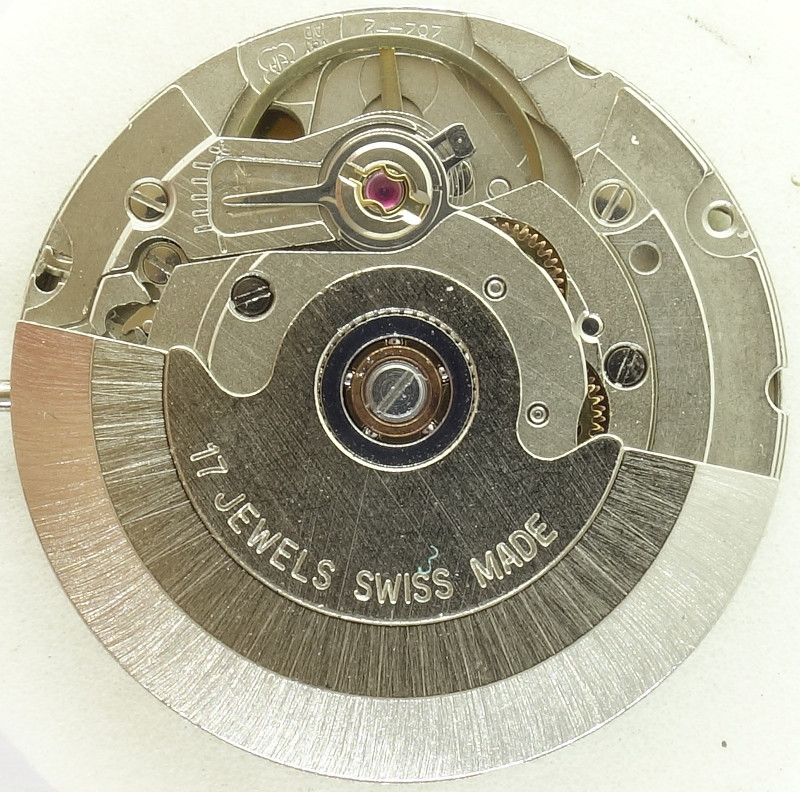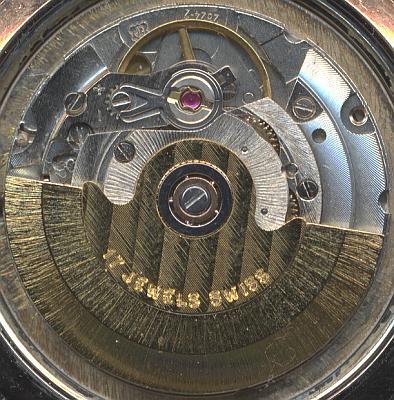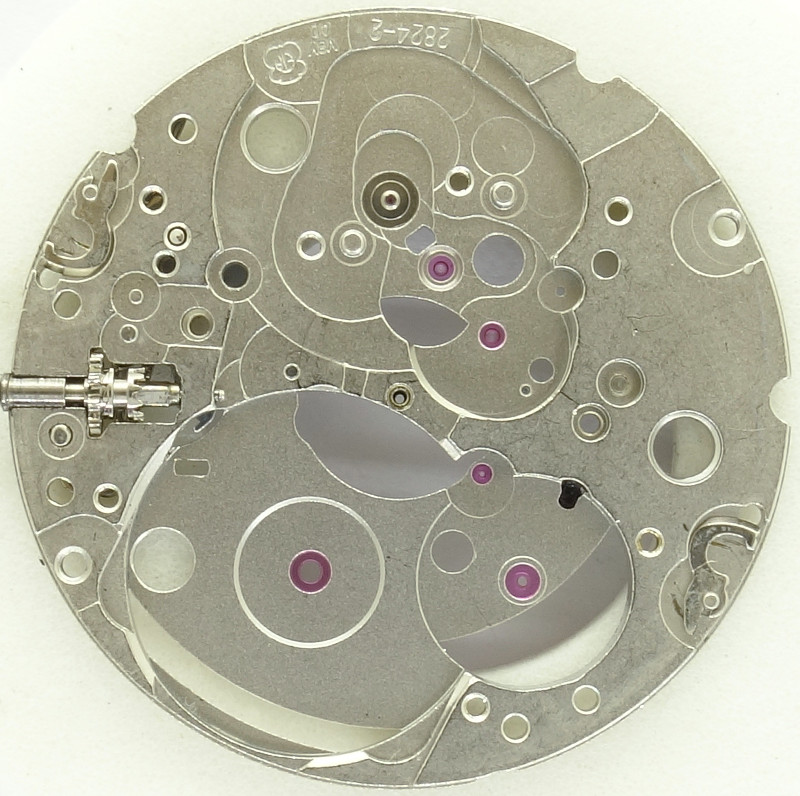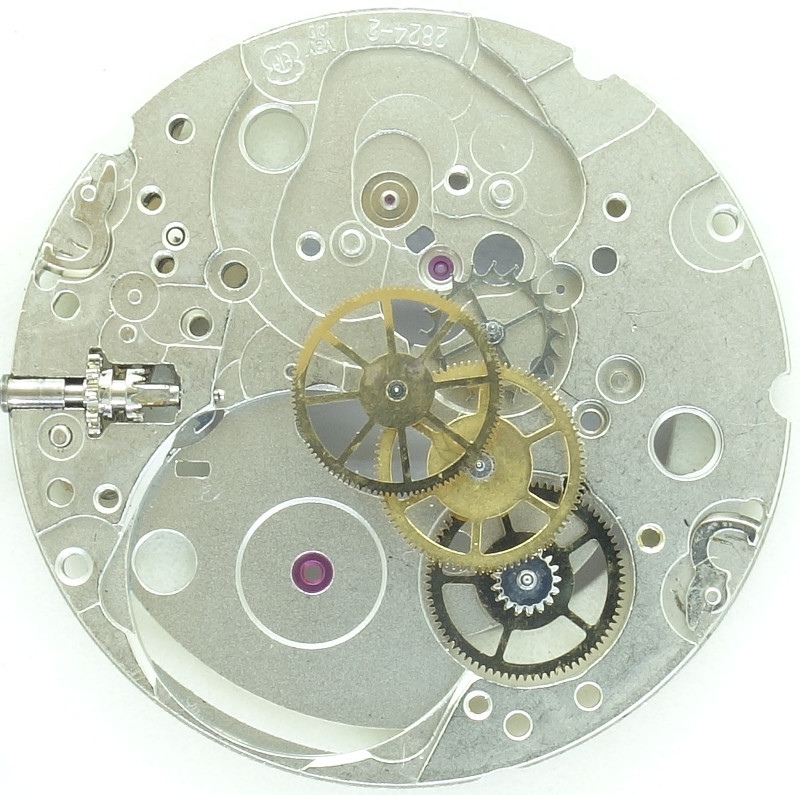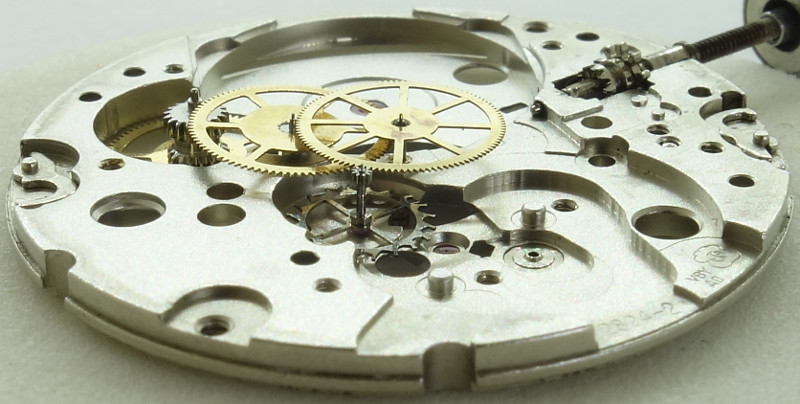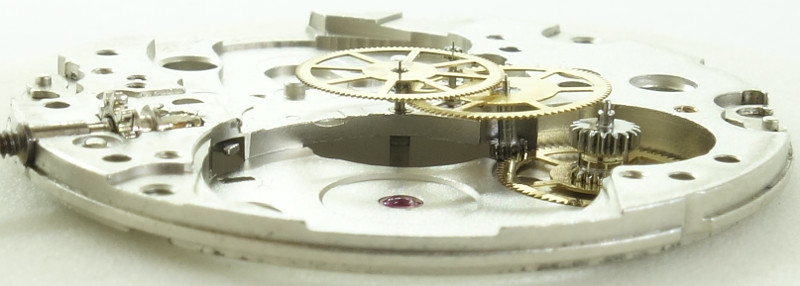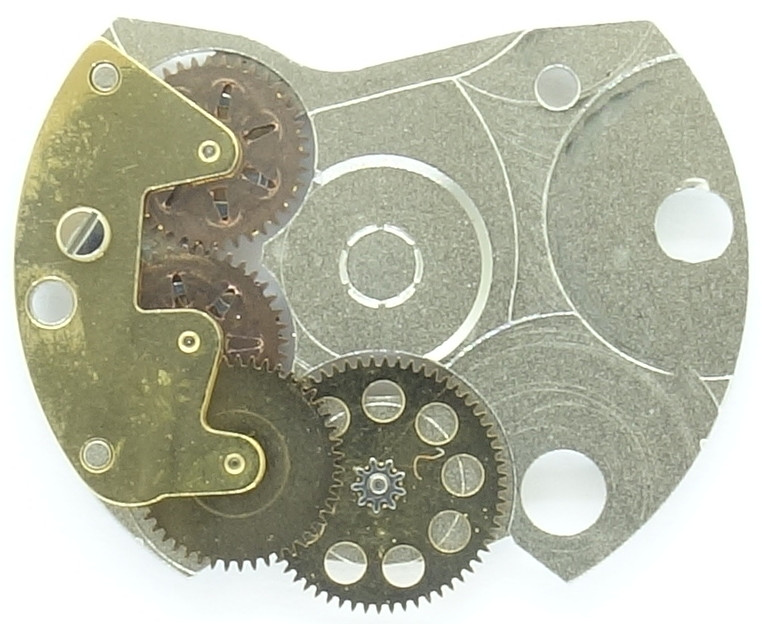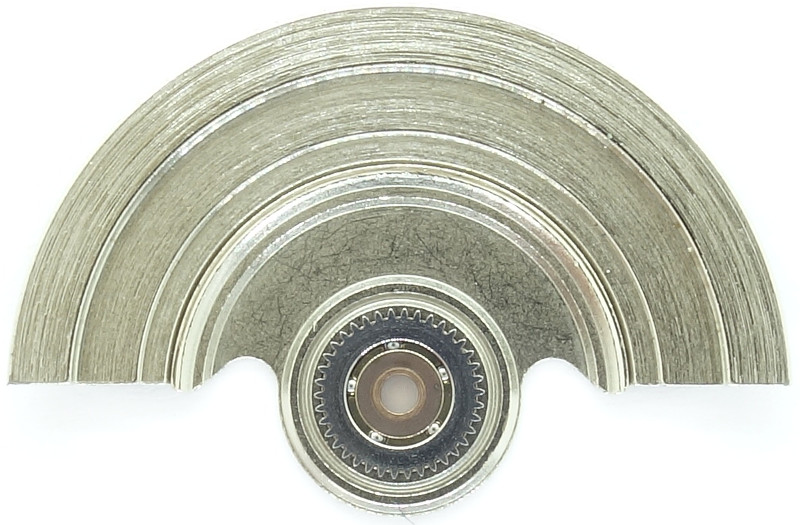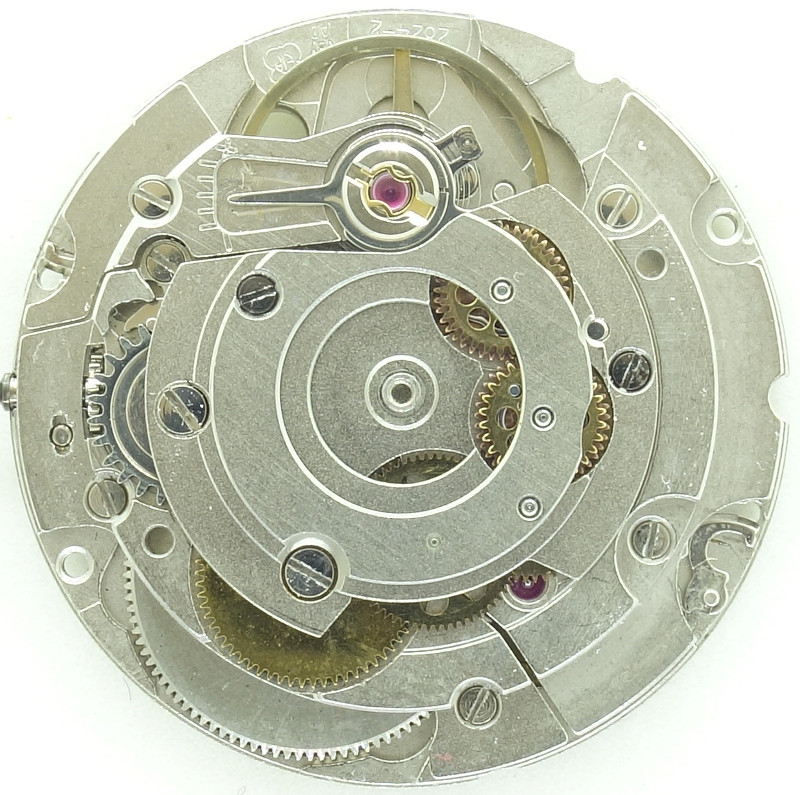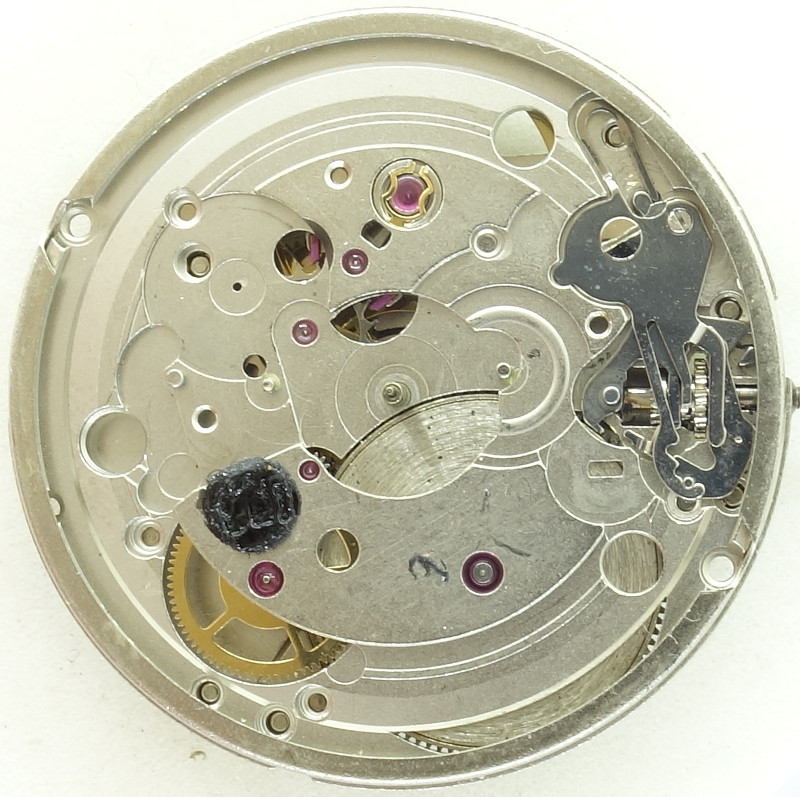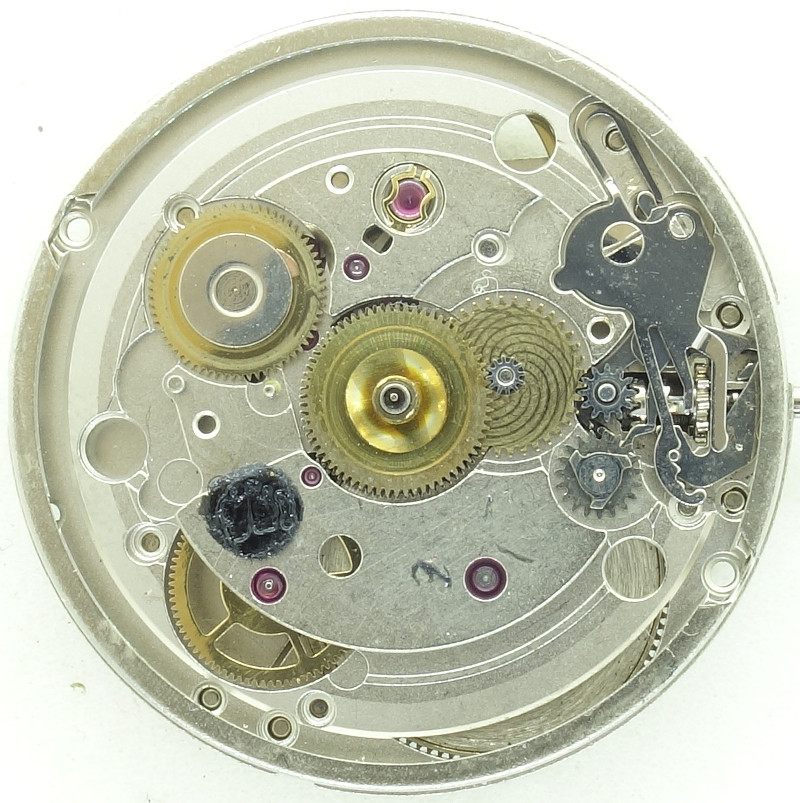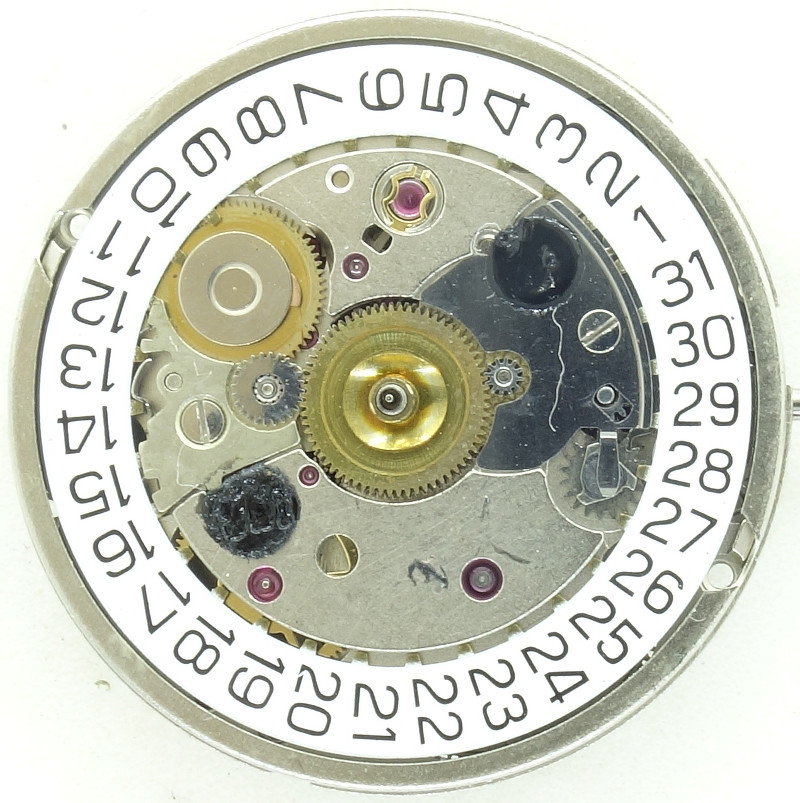Description
1971 released ETA the caliber 2824, a fast-beat selfwinding movement with date indication. Its revised version, recognizable on the suffix “-2” is available since 1982. The production figures shall be in the two digit million range and its efficiently and cost saving construction was one of the main reasons, why this movement survived the quartz crisis of the 1970ies and 1980ies.
After the expiration of the patents for this movement some years ago, the market was literally flooded with clones of the ETA 2824-2, not only swiss-made but also from the Far East.
The ETA 2824-2 is such a reliable construction that in the better versions, the chronometer specs are respected easily.
The specimen shown here is the simplest version with only 17 jewels and long regulator arm. This is no longer available for a long time, because the 25 jewels and ETAChron finetuning regulation are standard in each of the modern versions.
The base plate not only shows, that all important bearings (except of the center second hand) contain rubies, it also shows, that we have a gear train with indirectly driven hands on the dial side - a modern construction, introduced mainly by ETA in the early 1950s.
The directly driven center second is as typical for this gear train as the second wheel at 5 o’clock, which engages with the mainspring barrel.
The steel escape wheel has got 20 teeth, since this movement is a fast beating one with 28800 A/h (4 Hz).
As regulator, the specimen shown here uses a simple three-leg anular balance, better versions have got a Glucydur balance. All balance wheels are shock protected, usually with the proven Incabloc shock protection system.
The balance regulates a swiss pallet lever escapement.
Thehands are driven via the lower gear of the third wheel. It engages the minute wheel on the dial side, which has a slip clutch with the cannon pinion and thus drives the further hands (and the date indication)
The ball beared oscillating weight engages with the two exchange wheels of the selfwinding module. Depending on the direction of rotation, ones spins free and the other drives the winding mechanism - always on the same direction.
On manual wind, the pawls of the exchange wheels ensure the decoupling of the oscillating weights. Since both exchange wheels have got a very high rotating speed, they are prone to wear and so, the oscillating weight often does not decouple and spins with high speed, too. A clear sign of an overdue service.
As usual on better ETA movements, the oscillating weight is ball-beared. This makes it less delicate against wear and shocks, compared to an axle bearing.
At 9 o’clock you can see the crown wheel, into which the ratchet engages. Since the crown wheel is floatingly beared, it is another wear-prone part of the movement, since after longer use, the bearing is grinded down, so that the wheel no longer properly engages.
The four bearings of the selfwinding module of the 25 jewels version contain rubies on each side, those of the 17 jewels version shown here, only simple metal bearings.
On the empty dial side, you can see at 7 o’clock the second and third wheel, where the latter one engages with the minute wheel on the dial side.
At 3 o’clock, you see the yoke winding system. You must take special care not to press the setting lever too deep on the movement side. To avoid this, use a screwdriver blade, which is as long, as the recess there.
On the ETA 2824-2, the date changes instantly at midnight. The switching wheel at 10 o’clock, whose finger is tensed over the whole day, unloads suddenly at midnight.
The second crown position is used for quick-setting of the date. With that, the moveable switch wheel at 4 o’clock engages in one direction with the date ring, in the other direction, it spins freely.
The ETA 2824-2 is actually an oldtime, whose construction dates back in most details to the 1950s. It has proven to be so reliable and easy to produce, that it survived until today and so it is one of the longest manufactured movements ever - with accordingly high production figures.
While initially it was also used in rather cheap watches, the ETA raised the price for it so much, that an original ETA 2824-2 is, in contrast to its many clones, already a luxury movement. You have to decide for yourself, if that’s really justified.
In the lab
It was cleaned, oiled and also demagnetized, whereas the latter was not overly successful - a phenomen I yet saw only on ETA movements. It was not possible to adjust it to fair rates.
Technical data
| Manufacturer: | ETA |
| Caliber: | 2824-2 |
| Size: | 11 1/2''' |
| Height: | 4,6mm |
| A/h: | 28800 |
| lift angle: | 50° |
| Number of jewels: | 17 |
| Escapement: | Pallet lever |
| Balance types: | Nickel anular balance |
| Shock protection(s): | Incabloc |
| Balance bearing / direction hairspring: | Clockwise |
| Moveable stud: | yes |
| Adjust mechanism: | ETAChron / long regulator arm |
| Winding mechanism: | yoke winding system |
| Setting lever spring: | 1 hole(s) |
| Features: |
|
| Production period: | 1971 (1982) - |
| Production years: | 1982- |
| Documentation (years): | 2006 - 2015 |
| Inventory number: | 19021 |
